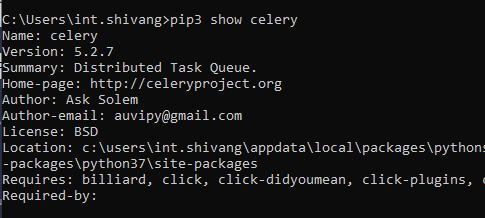
|
|
In Python Environment, Celery is the open-source distributed task queue system for Python, mainly designed to execute the tasks asynchronously. This enables the separation of time-consuming resource-intensive tasks from the main application, allowing them to be processed in the background by distributed worker processes. In this article, we will see two different methods to upgrade or install the latest version of the Celery module in Python. What is Celery in Python?Celery is an open-source distributed task queue system in Python that is widely used for handling distributed work in web applications. It allows you to distribute the execution of tasks across multiple worker nodes, making it easier to scale and parallelize the processing of asynchronous tasks. Features of Celery
Upgrading Celery in PythonBelow are some of the ways by which we can upgrade celery in Python: Step 1: Check Current VersionHere, we will check the current version of celery installed in our system by using the following command. pip show celery Output:
Step 2: Upgrade CeleryFirst, open the command prompt with the administrative user on your system and execute the below command in the prompt to install Celery using PIP. pip3 install --upgrade celery
Step 3: Verify the UpgradationOnce the installation is completed, our next task is to verify the successful installation. So we can verify it by checking the information about the library. Execute the below command in the prompt to verify. pip3 show celery Output:
|
Reffered: https://www.geeksforgeeks.org
| Python |
| Related |
|---|
| |
| |
| |
| |
| |
Type: | Geek |
Category: | Coding |
Sub Category: | Tutorial |
Uploaded by: | Admin |
Views: | 10 |

